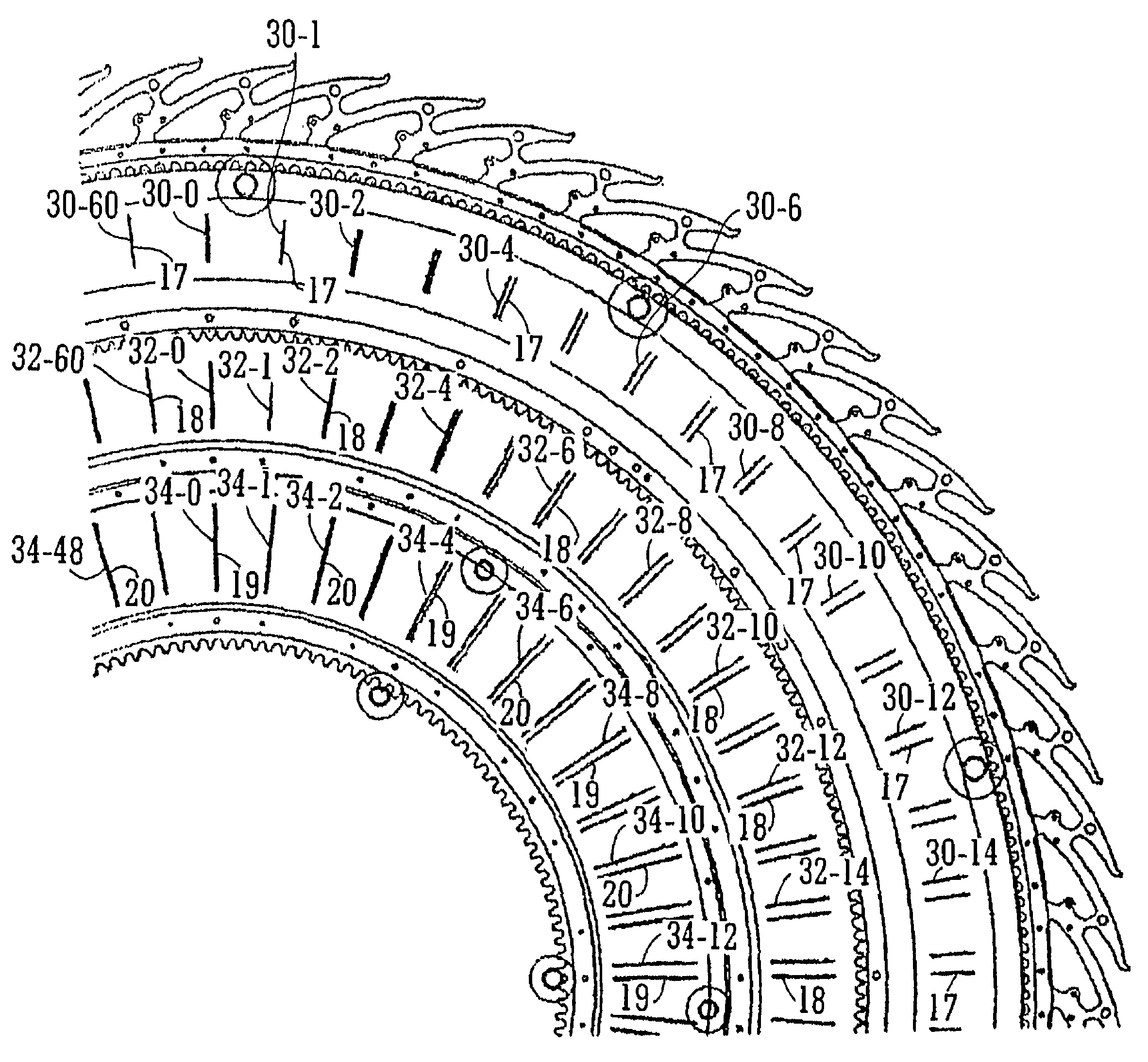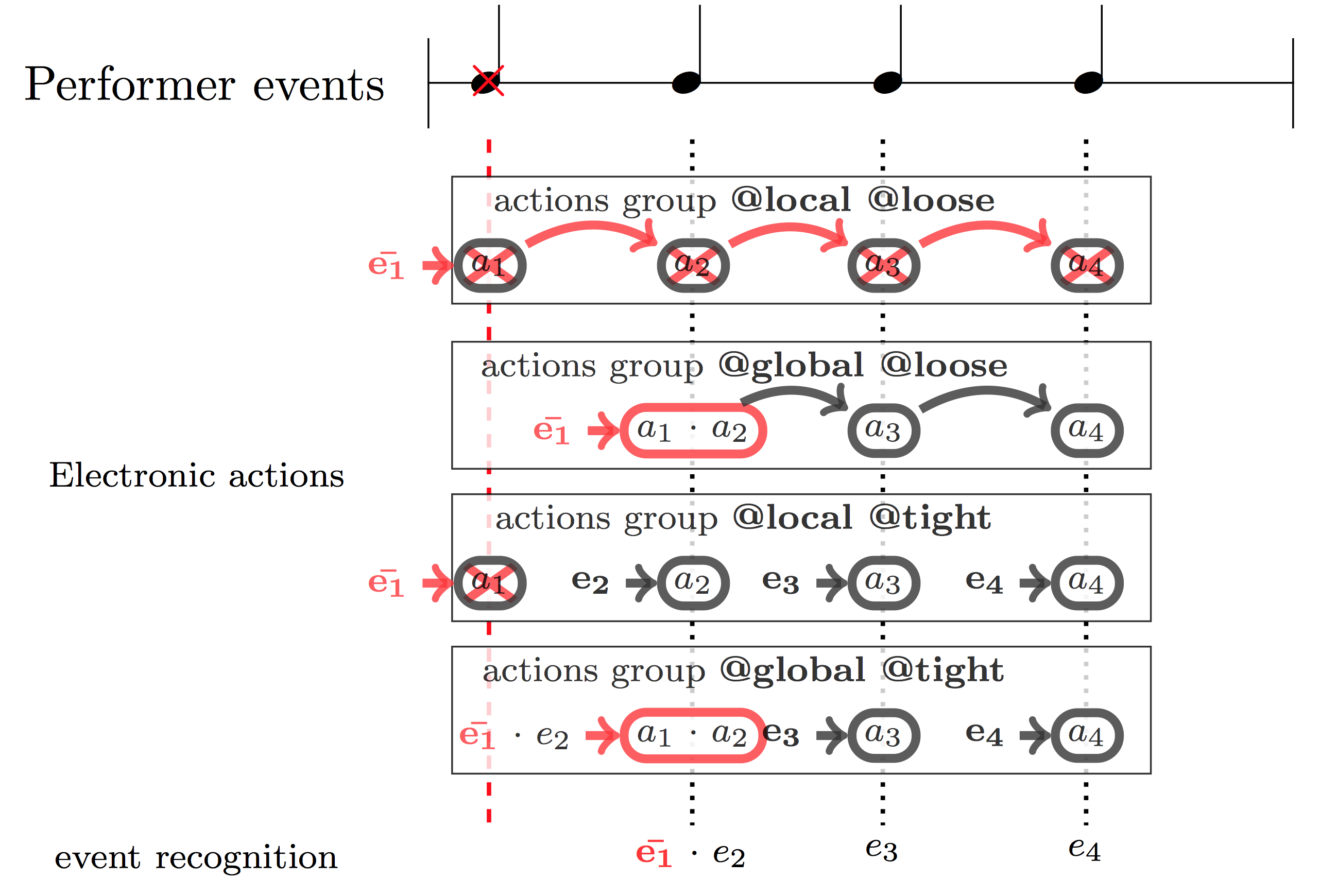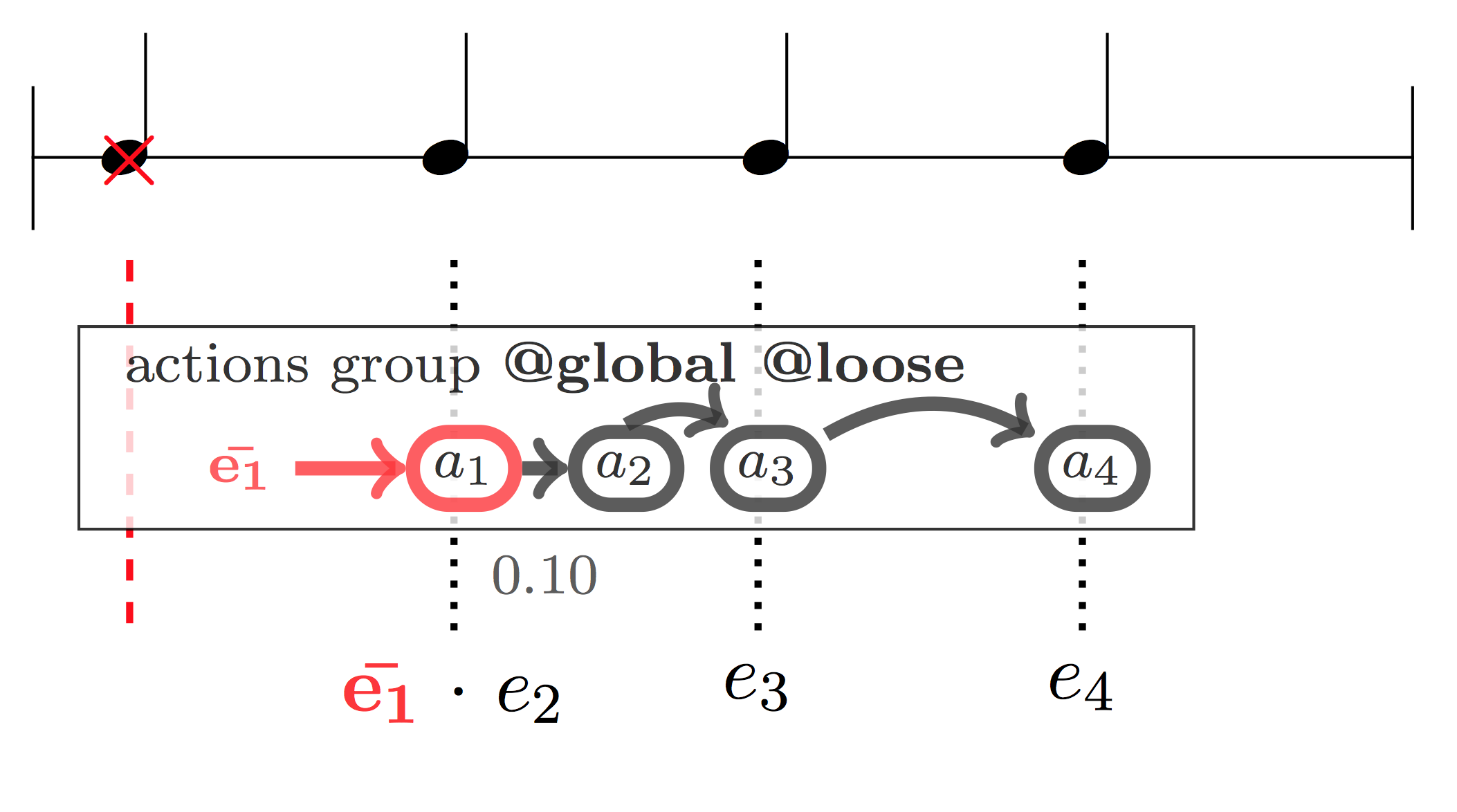Missed Event Errors Strategies¶

Some but not all of the errors during the performance (such as events missed by the performer, events that weren't detected by the listening maching, or events that the listening machine mistakenly recognizes) are handled directly by the listening modules. The critical safety of the accompaniment part is reduced to the handling of missed events (whether missed by the listening module or human performer):
-
In some automatic accompaniment situations, one might want to dismiss associated actions to a missed event if the scope of those actions does not bypass that of the current event at stake.
-
On the contrary, in many live electronic situations such actions might be initialized for future actions to come.
It is the responsibility of the composer to select the right behavior by attributing relevant scopes to accompaniment phrases and to specify, using an attribute, the corresponding handling of missed events.
An action is said to be local if it should be dismissed in the absence of its triggering event during live performance; and accordingly it is global if it should be launched in priority and immediately if the system recognizes the absence of its triggering event during live performance.
Once again, the choice of an action being local or global is given to
the discretion of the composer or arranger, through the specification of
the @local or @global attribute. By
default (i.e. without explicit specification), the actions at
top-level are tagged @global and error behavior are
inherited from the enclosing group.
Combining Synchronization and Error Handling.¶
The combination of the synchronization attributes and error handling attributes for a group of accompaniment actions gives rise to four distinct situations. Figure below attempts to showcase these four situations for a simple hypothetical performance setup.
Each combination corresponds to a musical situation encountered in authoring of mixed interactive pieces:
-
@local and @loose: A block that is both local and loose correspond to a musical entity with some sense of rhythmic independence with regards to synchrony to its counterpart instrumental event, and strictly reactive to its triggering event onset (thus dismissed in the absence of its triggering event).
-
@local and @tight: Strict synchrony of inside actions whenever there’s a spatial correspondence between events and actions in the score. However, actions within the strict vicinity of a missing event are dismissed. This case corresponds to an ideal concerto-like accompaniment system.
-
@global and @tight:: Strict synchrony of corresponding actions and events while no action is to be dismissed in any circumstance. This situation corresponds to a strong musical identity that is strictly tied to the performance events.
-
@global and @loose: An important musical entity with no strict timing in regards to synchrony. Such an identity is similar to integral musical phrases that have strict starting points with rubato type progressions (free endings).
The Antescofo behavior during an error case is shown in figure below. In this example, the score is assumed to specify four consecutive performer events (e_1 to e_4) with associated actions gathered in a group. Each action is aligned with an event in the score. The four groups correspond to the four possible combinations of two possible synchronization strategies with the two possible error handling attributes. This diagram illustrates the system behavior in case event e_1 is missed and the rest of events detected without tempo change. Note that e_1 is detected as missed (in real-time) once of course e_2 is reported. The signaling of the missing e_1 is denoted by \bar{e_1}.

To have a good understanding of the picture notice that:
-
An action (a_i), associated with a delay, can be an atomic action, a group, a loop or a curve.
-
The triggers, defining when an action is fired (i.e., at an event detection, at another action firing, at a variable update…), are represented with plain arrows in the figure and detail mainly the schedule of the next action delay or the direct firing of an action. A black arrow signals a normal triggers whereas a red arrow is for the error case (i.e., a missed, a too late or a too early event).
Remarks:
A sequence of actions following an event in an score corresponds to a phantom group with attributes @global and @loose. In other words, the two following scores are similar.
NOTE C3 2.0
d₁ action₁
d₂ group G1
{
action₂
}
NOTE D2 1.0
NOTE C3 2.0
Group @global @loose
{
d₁ action₁
d₂ group G1
{
action₂
}
}
NOTE D2 1.0
During a performance, even in case of errors, if an action has to be launched it is fired at a date which is as close as possible to the date specified in the score. This explains the behavior of a group that is @global and @loose when its event trigger is recognized as missed. In this case, the actions that are still in the future are played at their “right” date, while the actions that should have been triggered are launched immediately (as a tight group strategy).
In the previous example, we remark delay variations (a_2 is directly fired for the @loose @global case and not 1.0 after a_1). This ’tight’ re-scheduling is important if the a_2 action has a delay of 1.10, the action should effectively be fired at 0.10 beat after a_1 (next figure):
NOTE C3 1.0 e1
group G1 @global @loose
{
a₁
1.10 a₂
1.0 a₃
1.0 a₄
}
NOTE D2 1.0 e2
NOTE D2 1.0 e3
NOTE D2 1.0 e4
